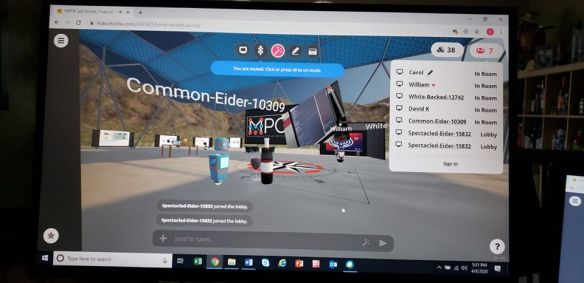When I was an undergraduate, I once took a course called “Reality and Illusion” that focused on different perceptions of reality seen through the lens of Spanish literature. In more than thirty years as a librarian, I have experienced a major disconnect between the reality of library usage and the illusion that so many have of what libraries are and how they are used.
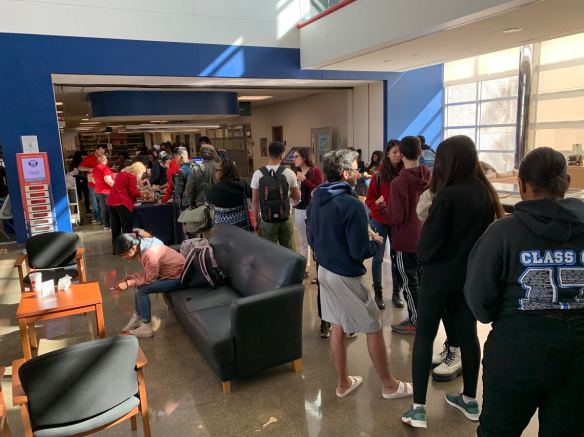
There is a stereotype of libraries that all librarians have dealt with throughout their careers and that fails to take into account the massive changes that have occurred and continue to occur in libraries.
According to the movie and television industry, the popular and mainstream press, the advertising industry, and social media, libraries are places visited by few people and where there are bun-wearing, spinster women walking around telling the few people who venture inside the library to be quiet. Those of you old enough to have watched the film classic It’s A Wonderful Life with Jimmy Stewart and Donna Reed, may remember the fate that befell Mary, the wife of George Bailey: when his wish was granted that he never existed, Mary became a frightened, timid librarian (complete with hair pulled back in a bun). Clearly, this was a fate to be avoided at all costs – even in 1946 America. There are countless other examples of this popular misconception that can be found everywhere today. Even in academia, there are those who believe (and say to me with some regularity) that we don’t need the library anymore because “everything is online.” These incorrect perceptions seem to be perpetuated and validated by people who have not been inside a public or academic library in a very long time, if at all.
The reality (pre-COVID19) is very different at most academic and public libraries in the United States. Libraries have become the hubs of their communities, bustling with activity and engagement. And while we still preserve some quiet zones for the focused scholar, researcher or individual seeking a place for quiet reading and reflection, our libraries as a whole are anything but quiet. At FAU, the main library on the campus at Boca Raton, the Wimberly Library, is a 164,000 square foot building that last year received more than 950,000 visits.
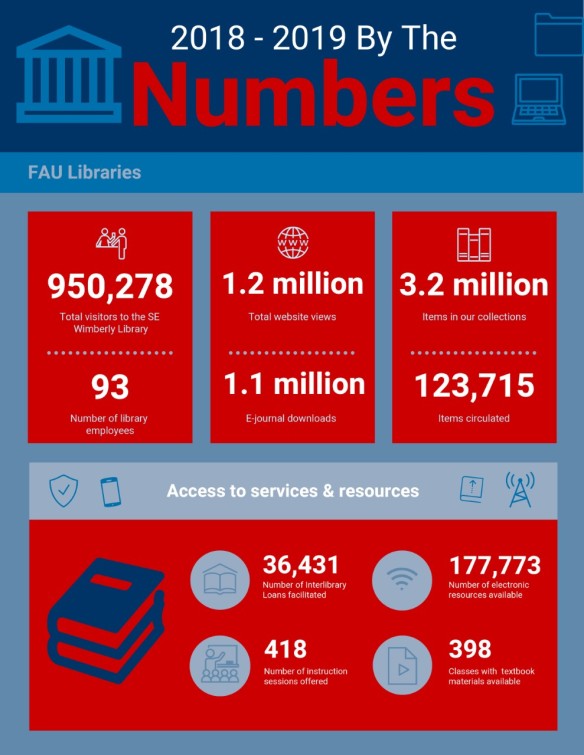
At class changing times, we have long lines of students trying to come in and get out of the building, as this picture shared last fall by one of our students on the Libraries’ Twitter account illustrates.

In the six months before we closed our facilities in response to COVID 19, we had over 482,000 visits (for a student body of 30,000). Many of the people who come in to the building stay for hours, using one of our computer labs or open spaces, studying and hanging out with their friends and fellow students for hours between classes.

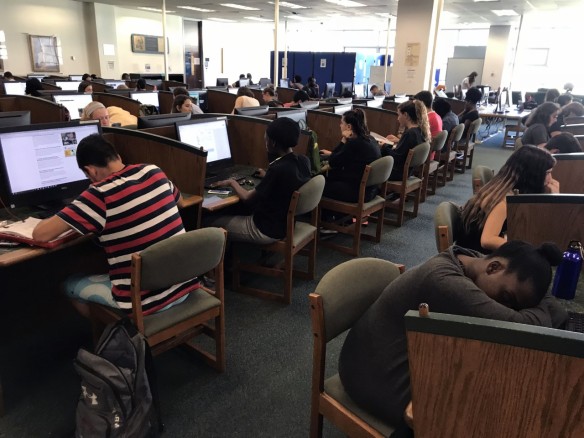
Our newly redesigned spaces, where students can reconfigure the space to meet their immediate needs, show how today’s students have been accustomed to working. They do everything together. And they do it in close proximity to their peers.
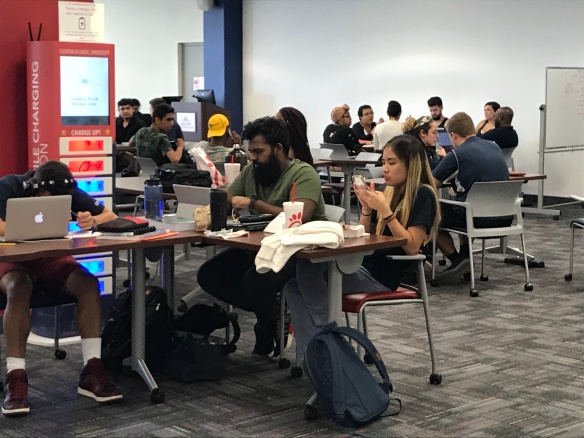
They find ways to be close to one another and work together even in spaces that were not designed for that purpose.

Students creating their own group-study space on the floor in another part of Wimberly
Since March 19, 2020 the faculty and staff of the FAU Libraries have been working remotely and perfecting new ways of serving FAU’s students, faculty, and community almost entirely without face-to-face interaction. I have described some of that effort in a previous posting entitled Library Redux. While some of what we have learned to do effectively in this world of safe social distancing will carry over and enable us to improve our services once we are back, we miss our community and we are all looking forward to the day when we will be able to reopen our doors and interact with our community face-to-face.
But this reopening must be done safely.
The popular stereotype of libraries as empty, quiet zones could now threaten the safety of our public and our staff as we look to reopen. In a recent report produced by researchers from Johns Hopkins University’s Center for Health Security entitled Public Health Principles for a Phased Reopening During COVID-19: Guidance for Governors, the authors provide recommendations on when it is safe to reopen different types of spaces. On p. 8 of the report, the authors discuss the need for risk assessment, noting: “Risk assessments should be integrated into the decisions around reopening. Risk assessments are formalized processes to evaluate risks and hazards. Assessing the risks of easing social distancing measures and restarting parts of the economy requires a measurement of the likelihood of increased transmission and the consequences of that transmission. Likelihood in this case means the probability that reopening a business, school, or other organization where people congregate will cause significantly increased transmission. Consequence is the impact that increased transmission could have on individuals or communities if a business, school, or other organization reopens or eases social distancing measures.”
(The authors of the above-referenced report have just changed their recommendation after hearing from so many librarians about the false assumptions on which they initially based their recommendation. More on this later.)
The authors of this report provide charts throughout to summarize for governors and their staffs what risk there is for reopening different types of facilities and operations. While on p. 14 they provide a chart that characterizes institutions of higher education as high risk: High for Contact Intensity, High for Number of Contacts, and High for Modification Potential, the very next page provides a chart characterizing libraries (as a community gathering space) as low risk: Low for Contact Intensity, Low for Number of Contacts, and Medium for Modification Potential. The one caveat they offer in their two-sentence explanation of this particular chart is that “The risk in these spaces is highly dependent on the size of the population they serve and the size of the space.” They then cite the CDC and a document from the Baltimore County Public Library for possible mitigation resources. In this section, the authors do not explain or justify their characterization of libraries as low risk. I can only wonder if this characterization is based at all on the popular – and erroneous – illusion that libraries are quiet places inhabited primarily by librarians who spend their time shushing the few patrons who venture inside.
(The authors of the above-referenced report have just changed their recommendation after hearing from so many librarians about the false assumptions on which they initially based their recommendation. More on this later.)
While there is much that is useful in this guide produced by Johns Hopkins, I am hoping that government officials will look beyond popular perceptions and will instead look to the people who work in or manage different types of spaces in order to uncover the reality of the use of these spaces for their community and the associated risks for reopening.
We are looking forward to seeing you all again and getting back to normal, when we can do so safely. Let’s hope that is soon.




